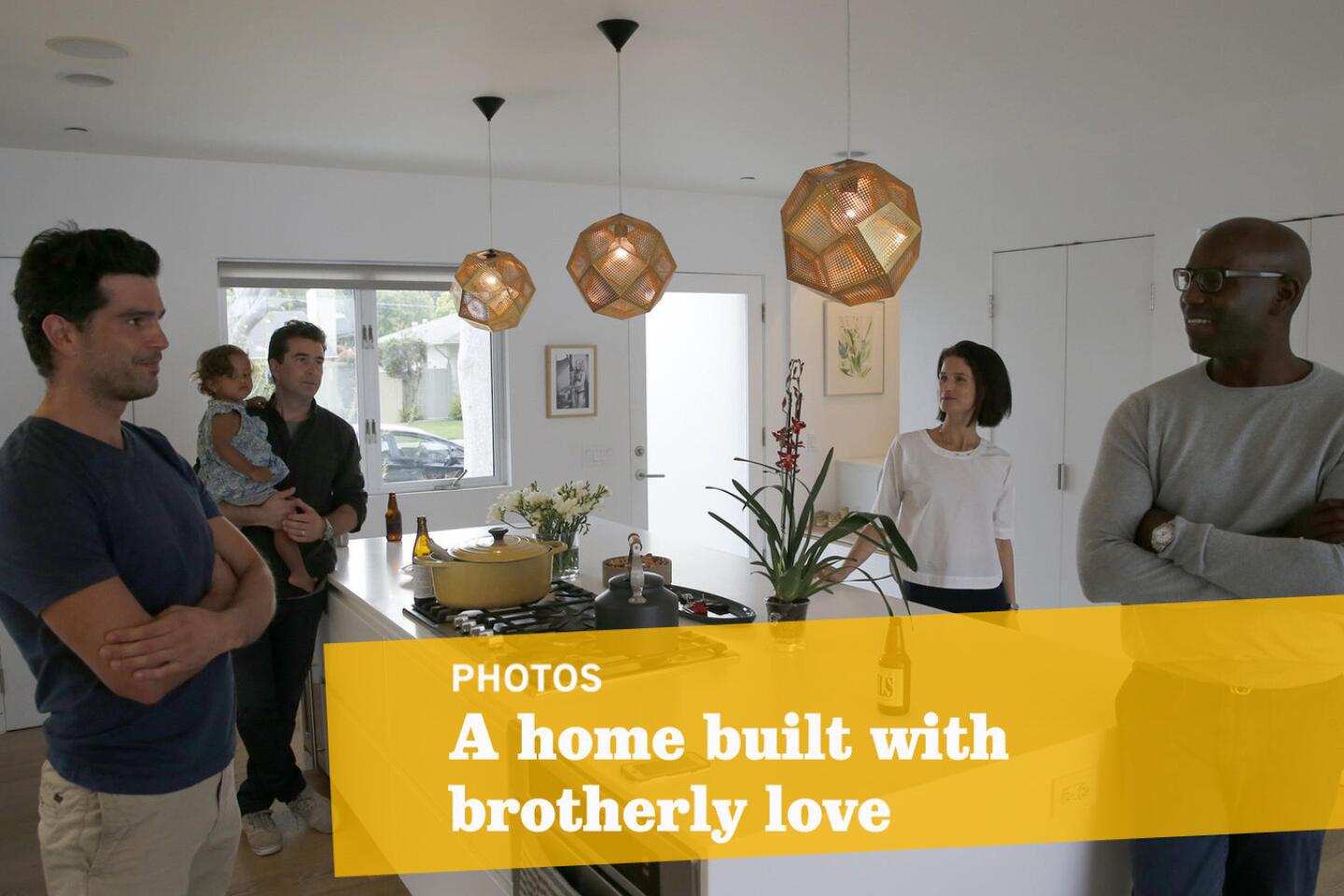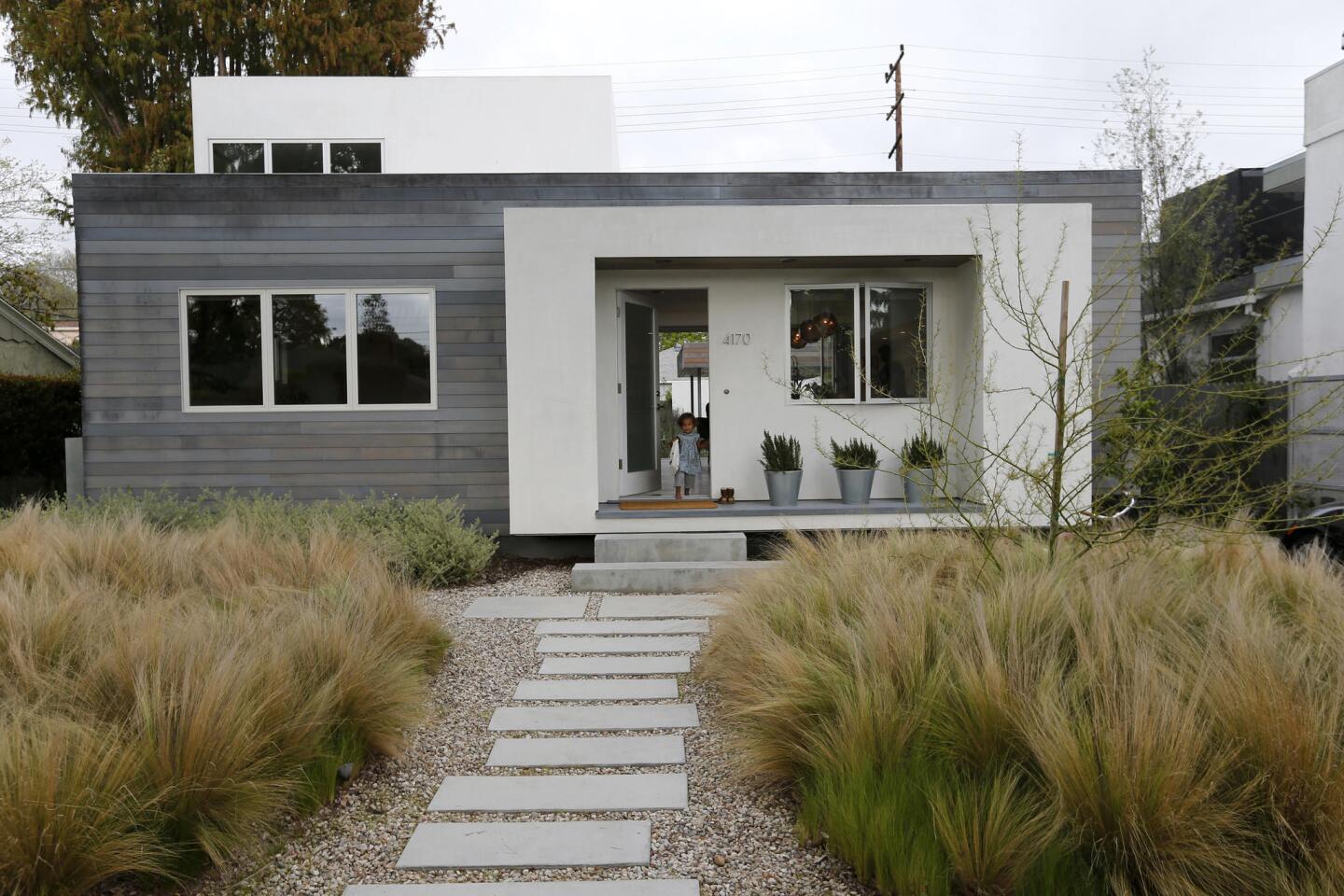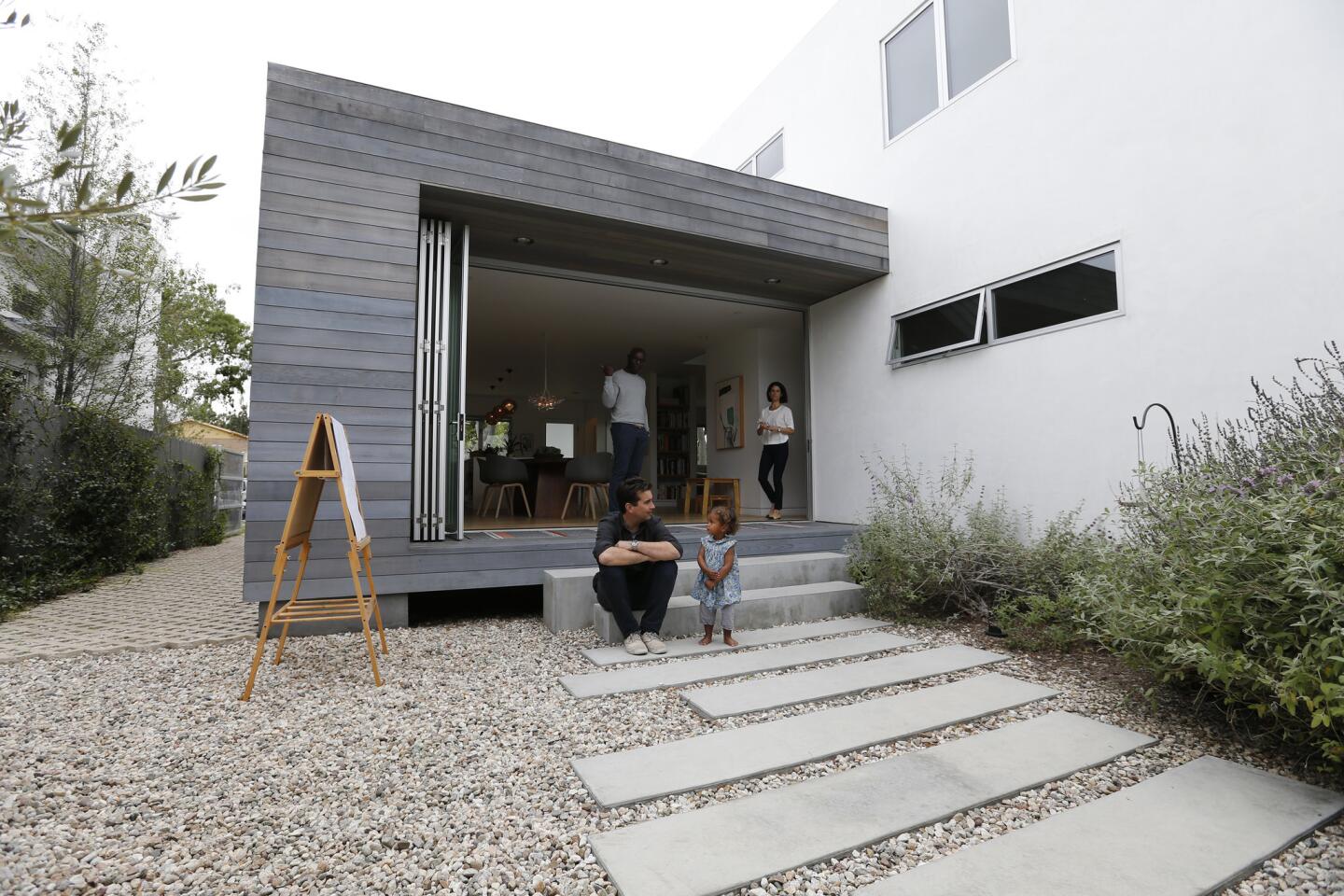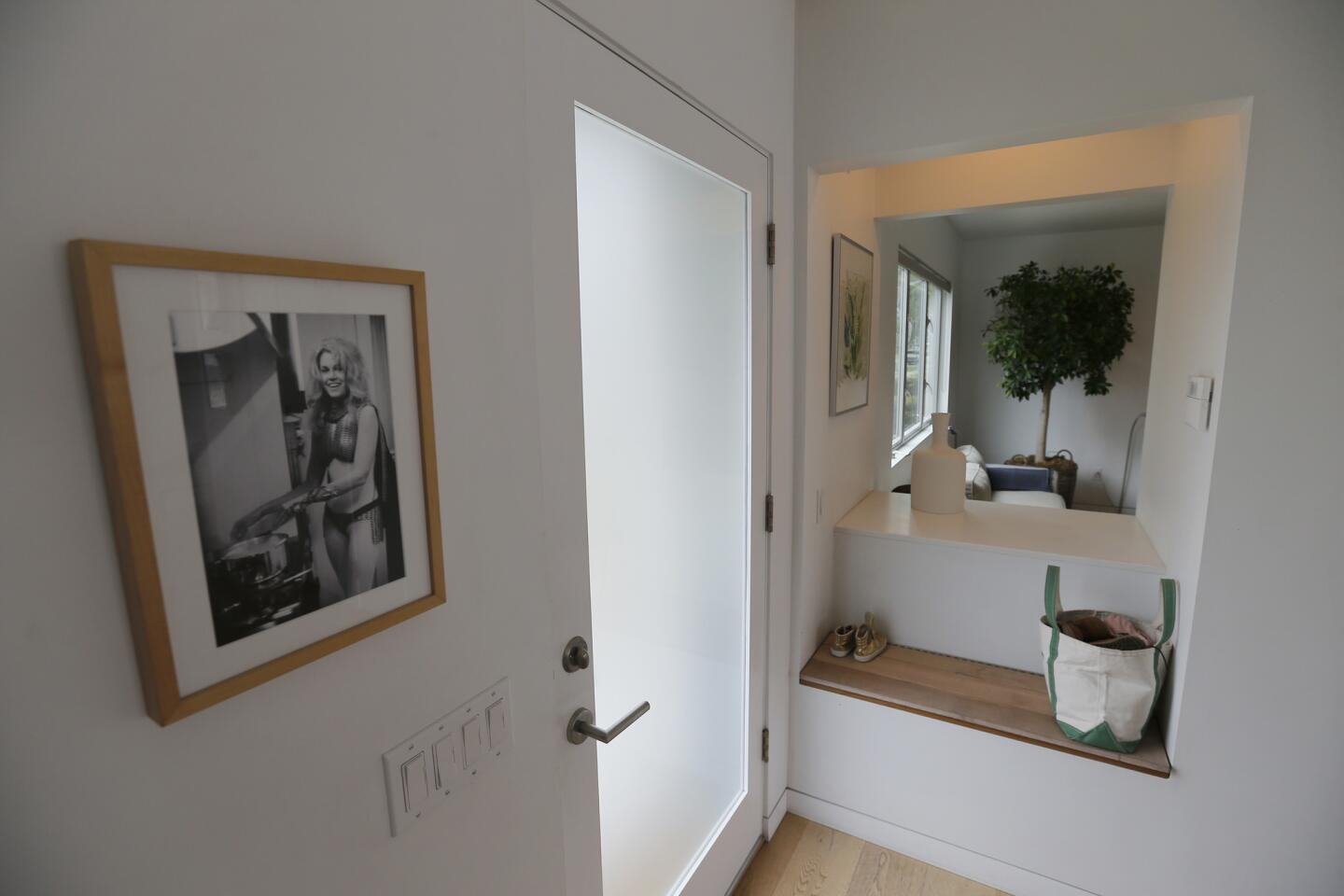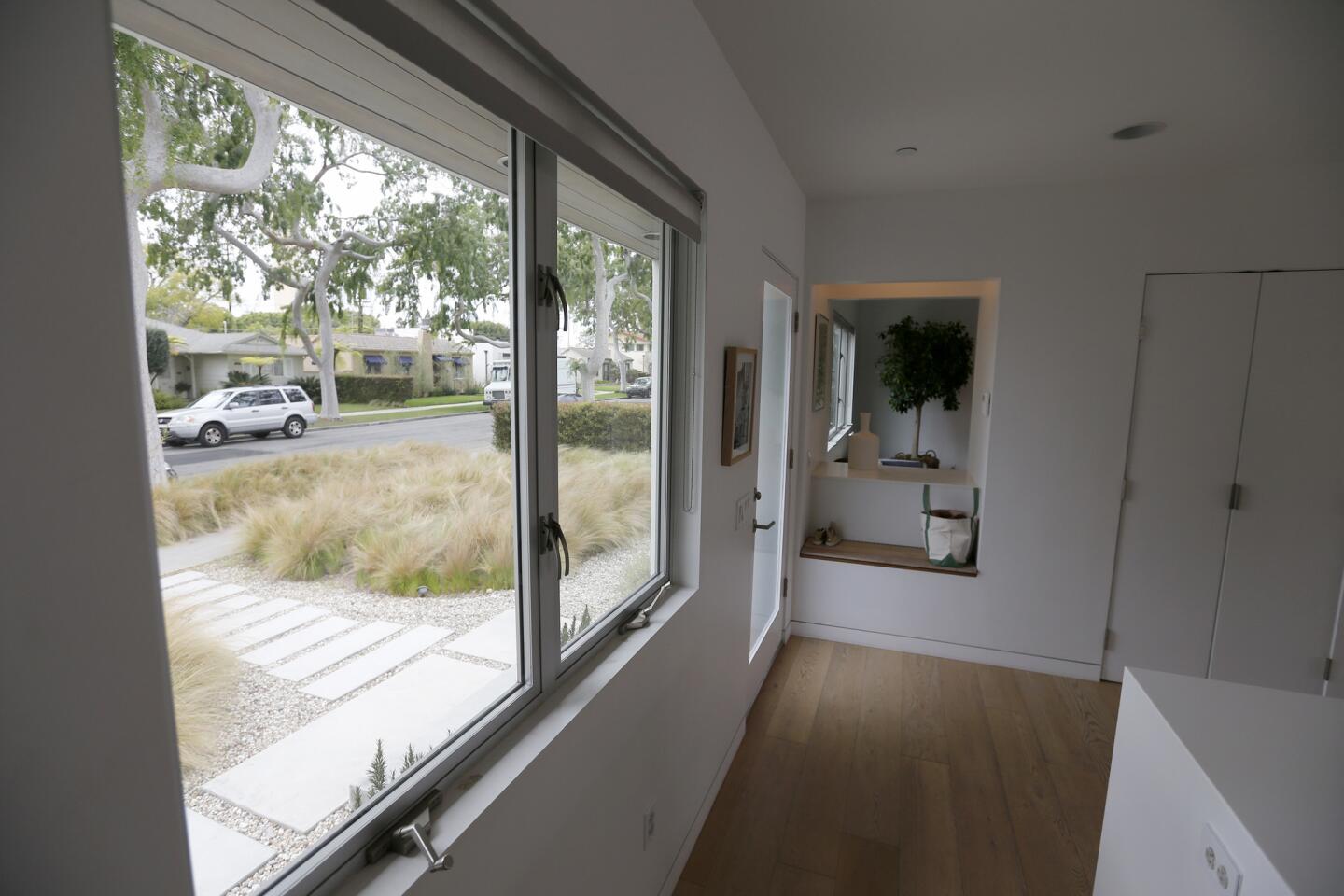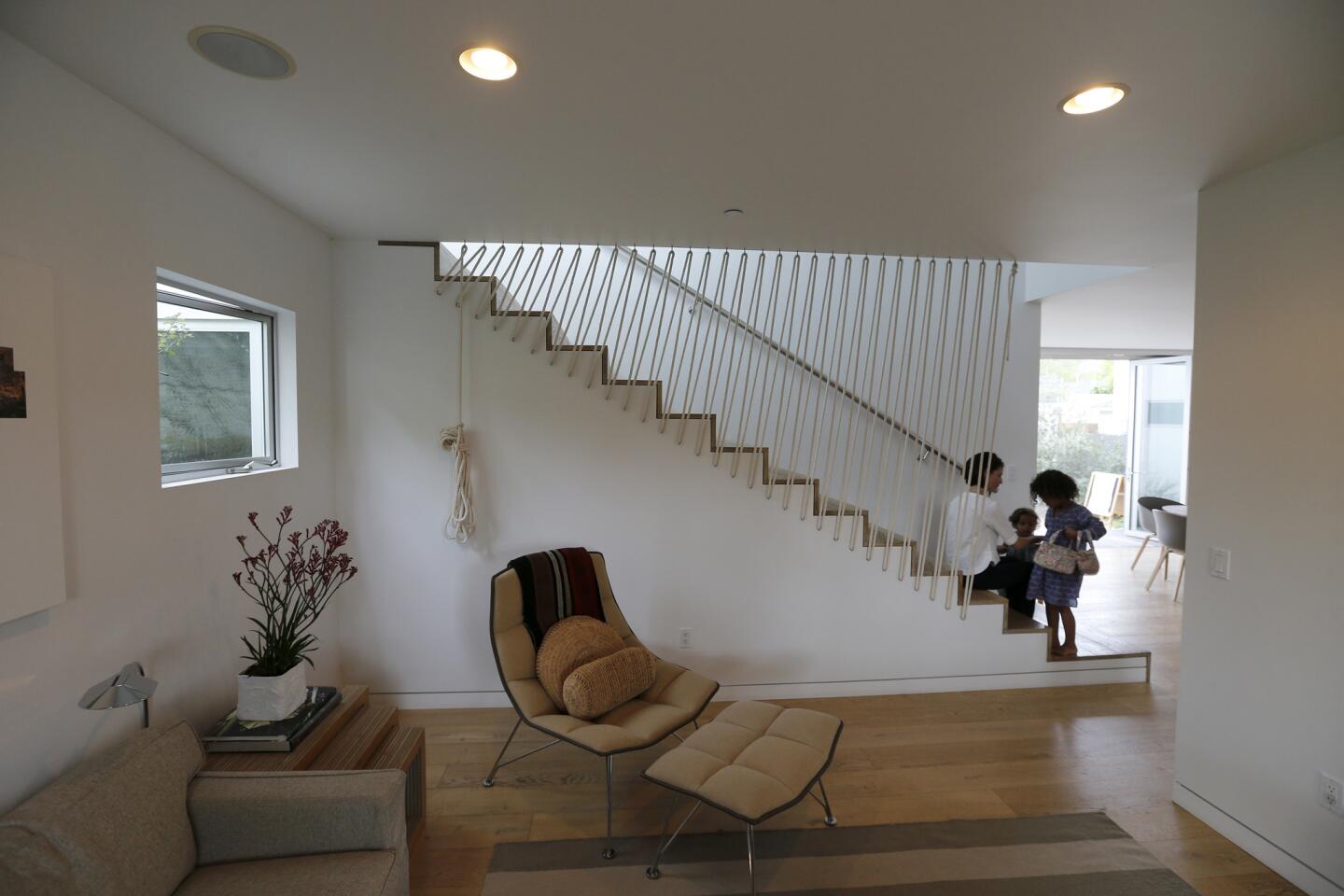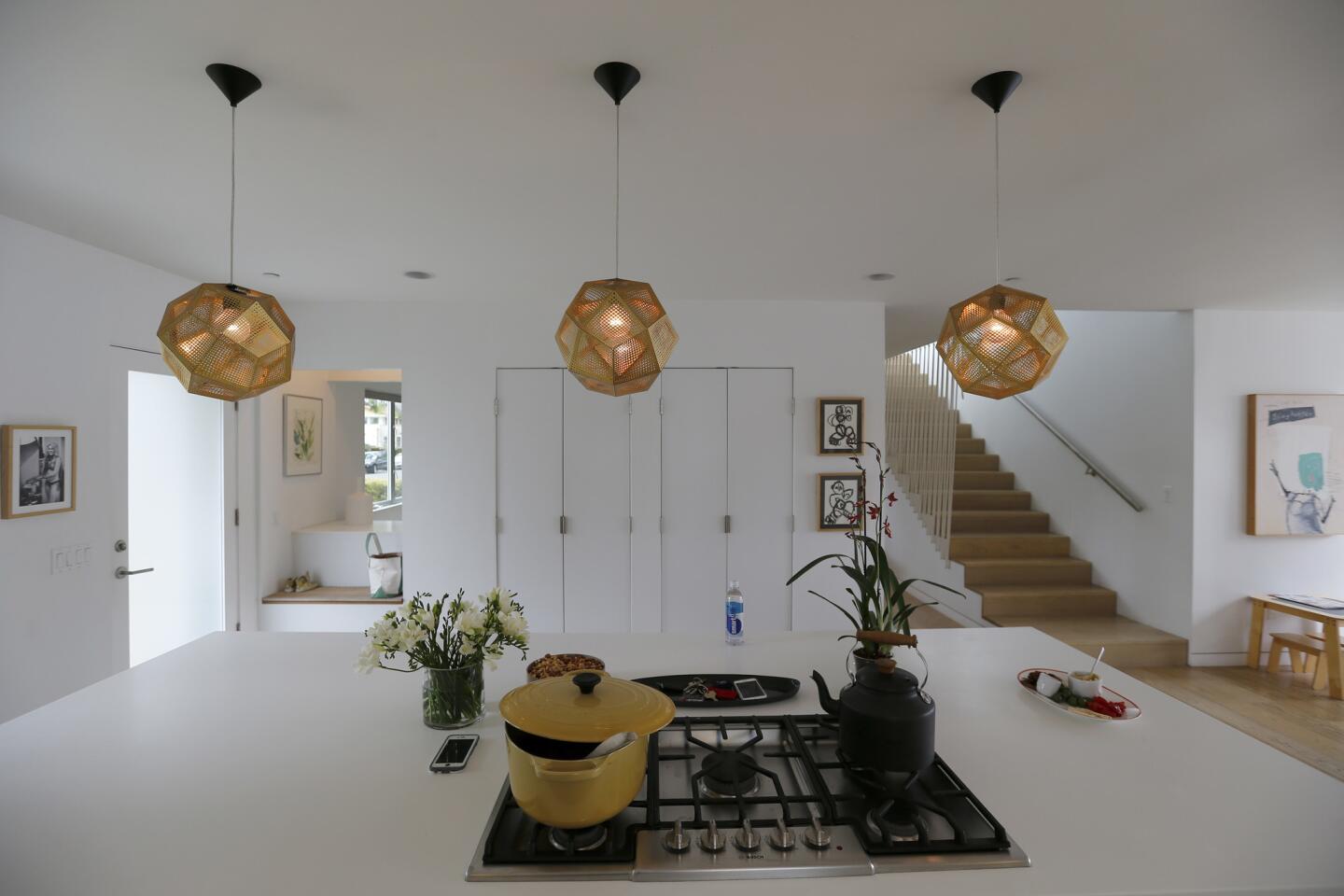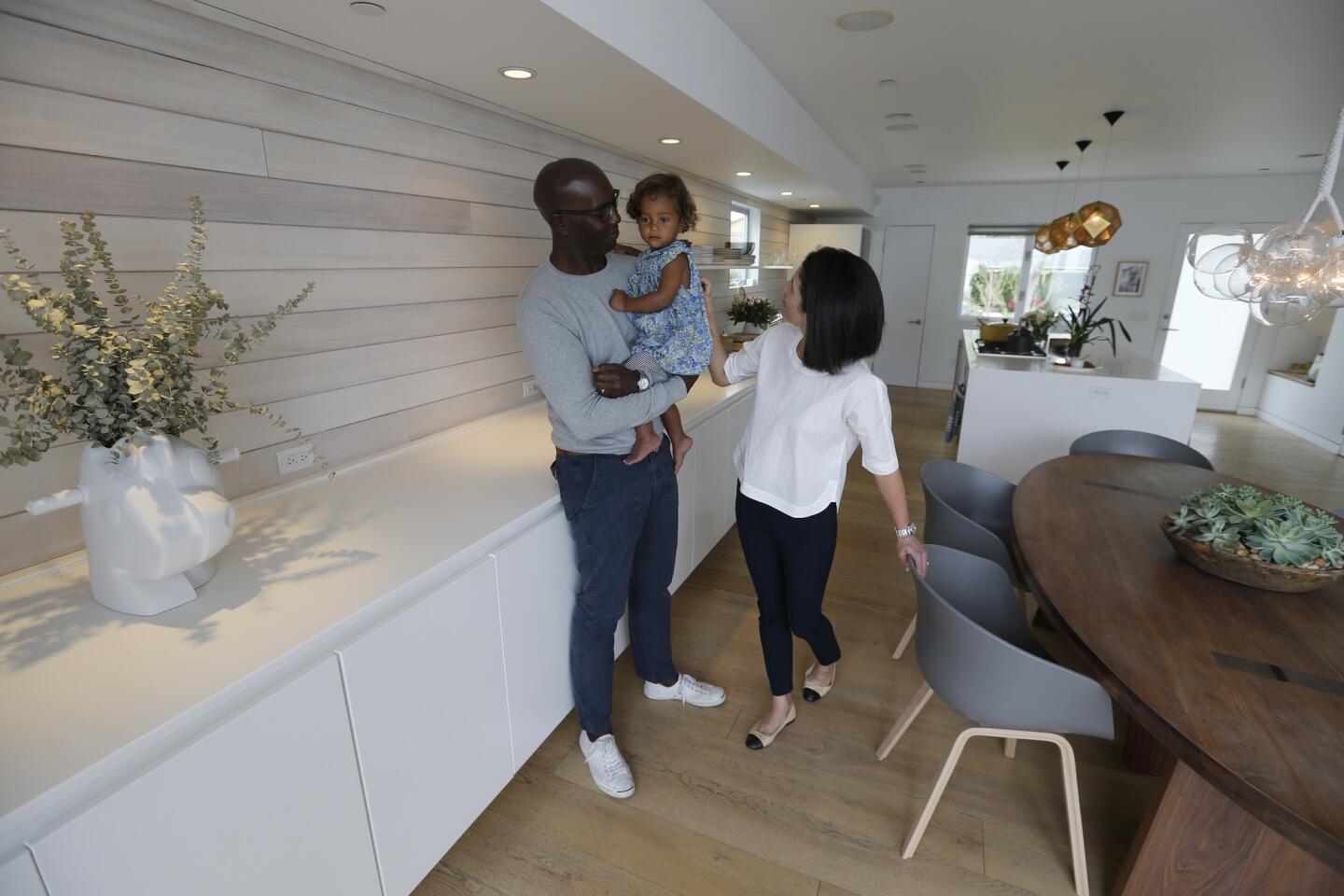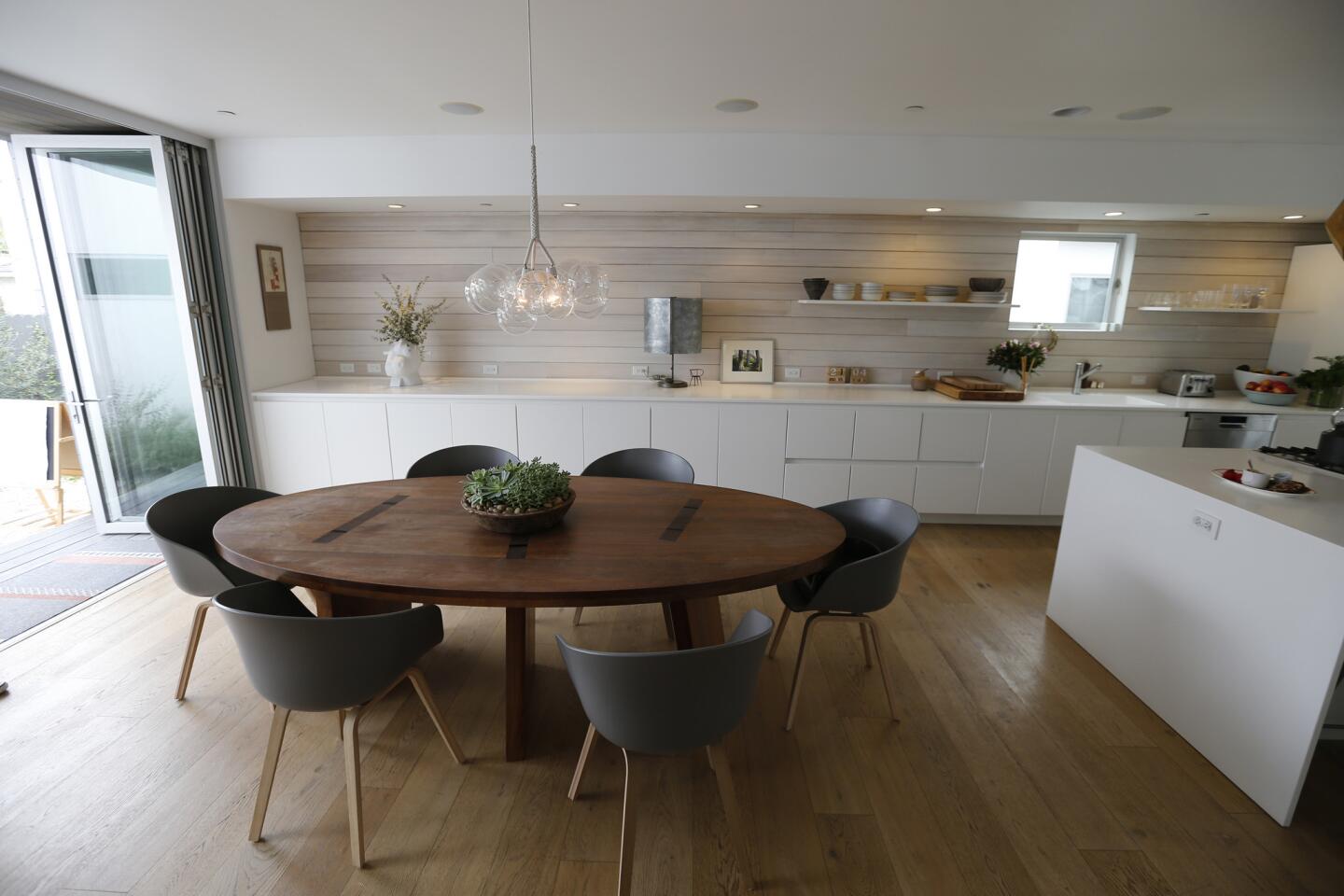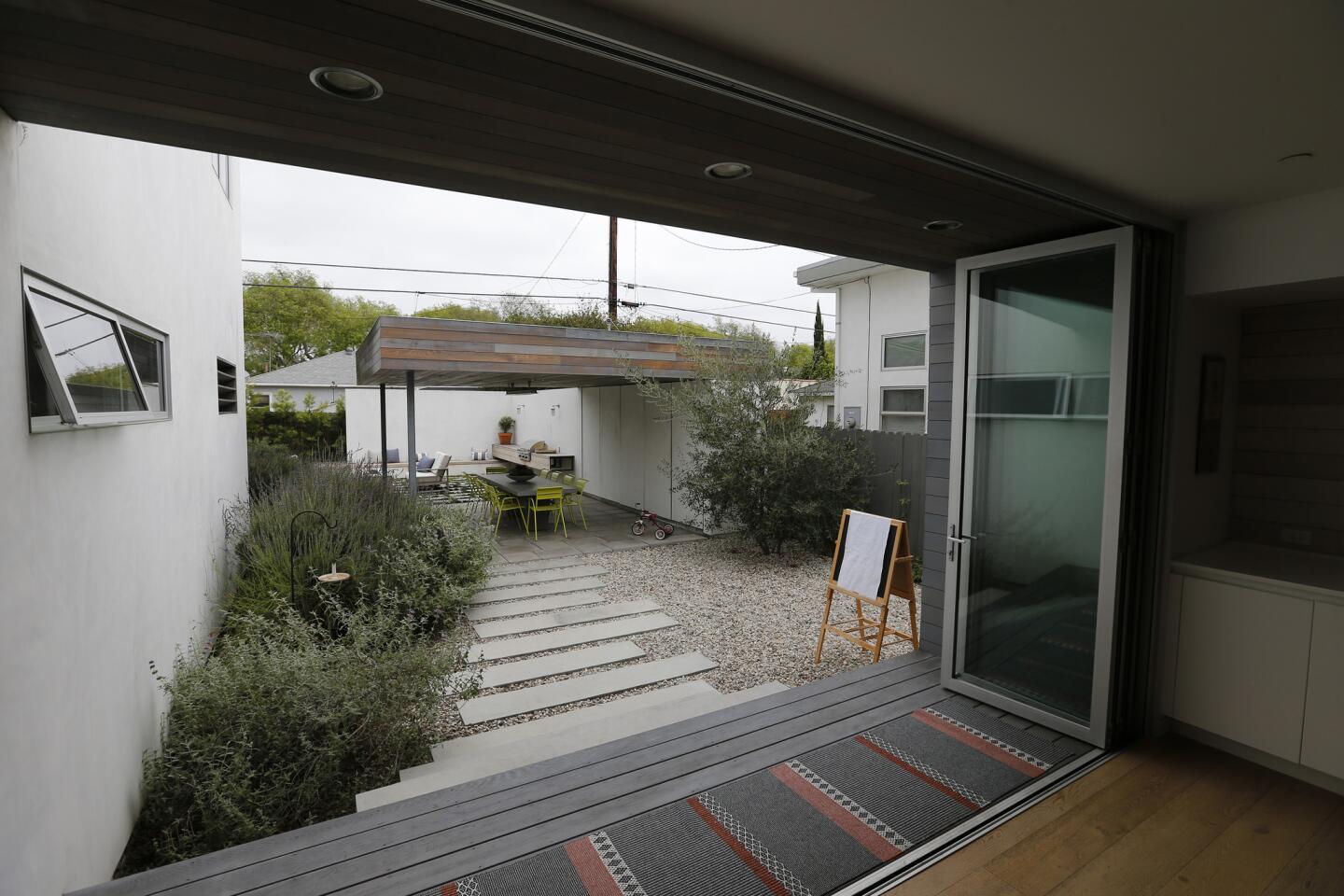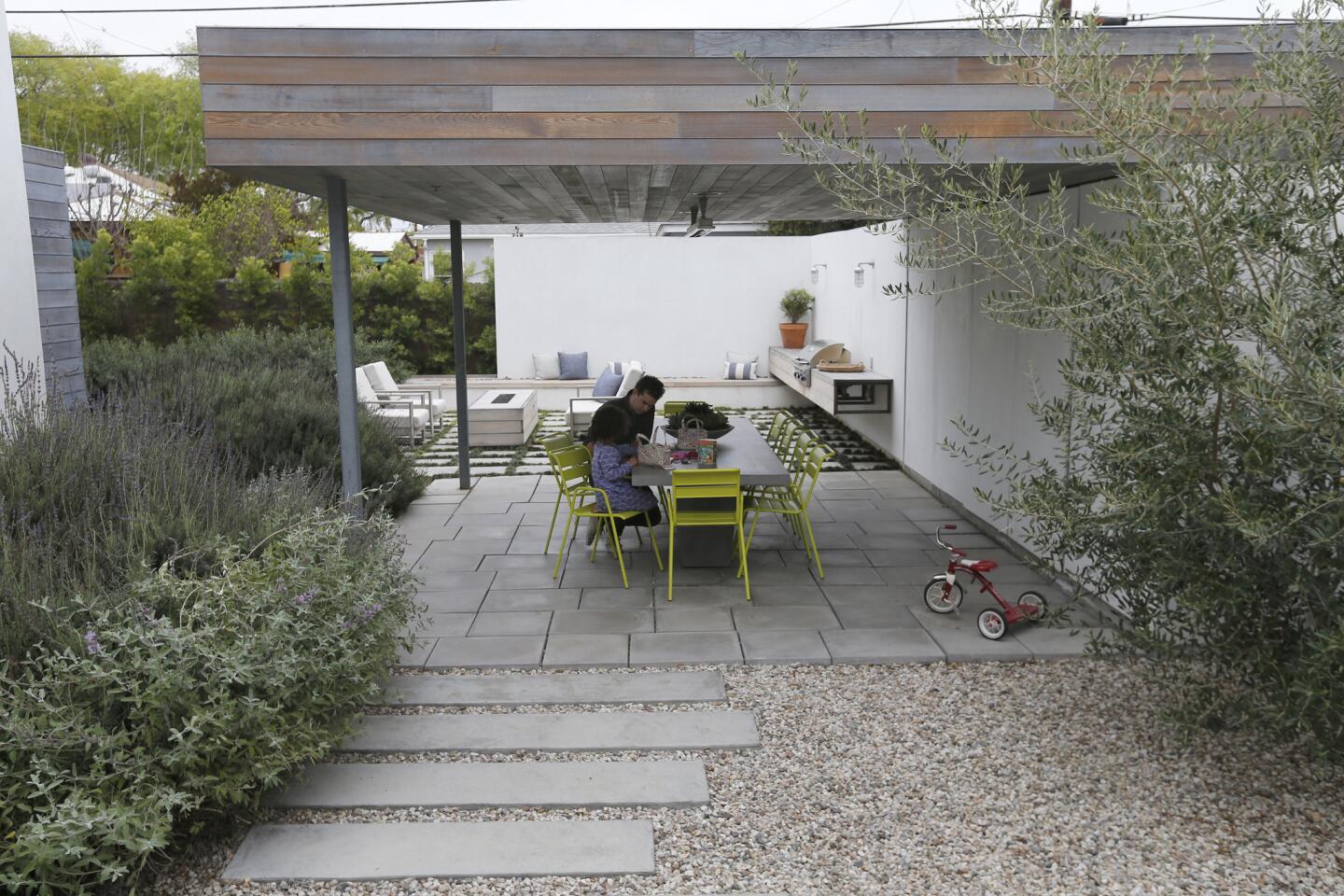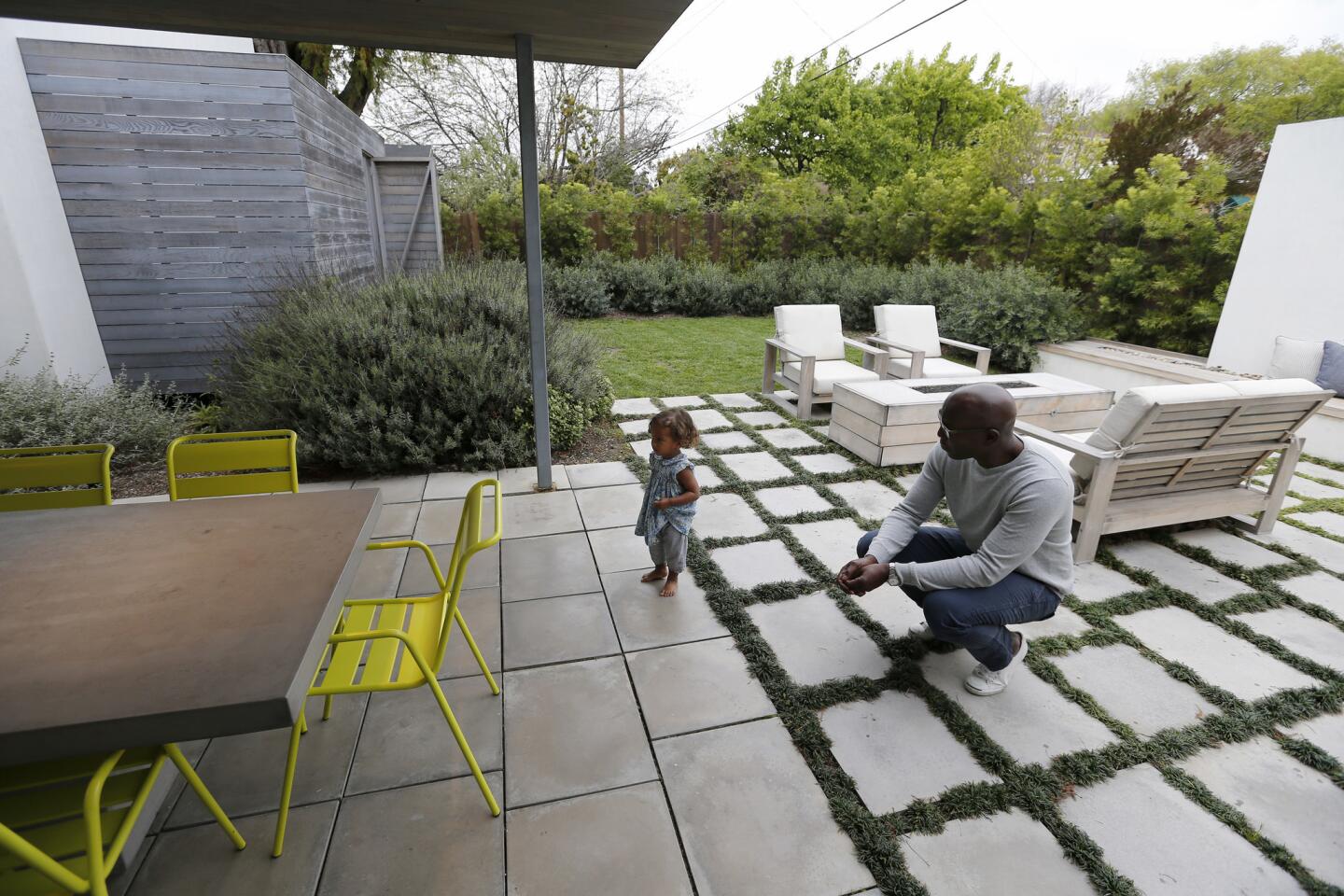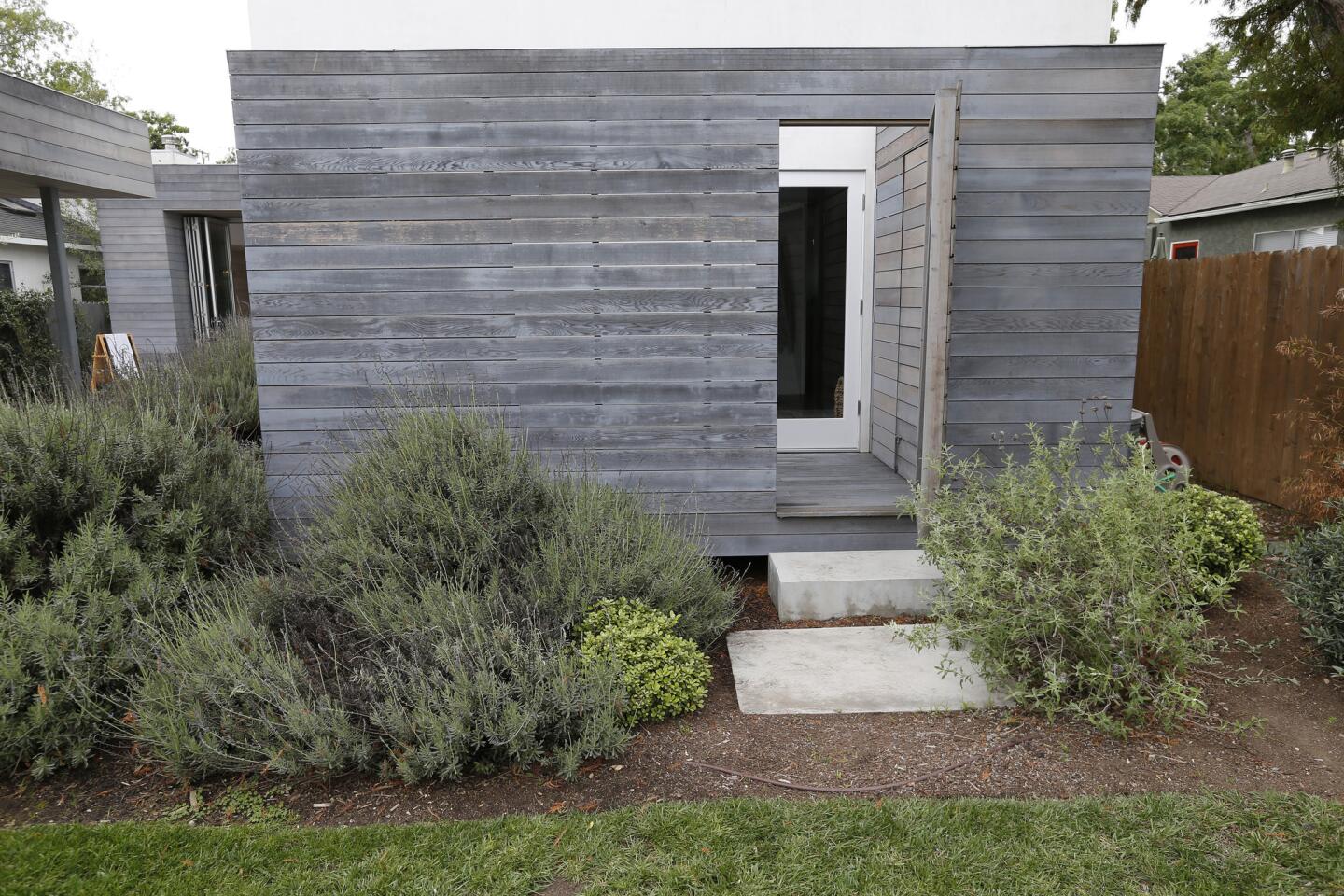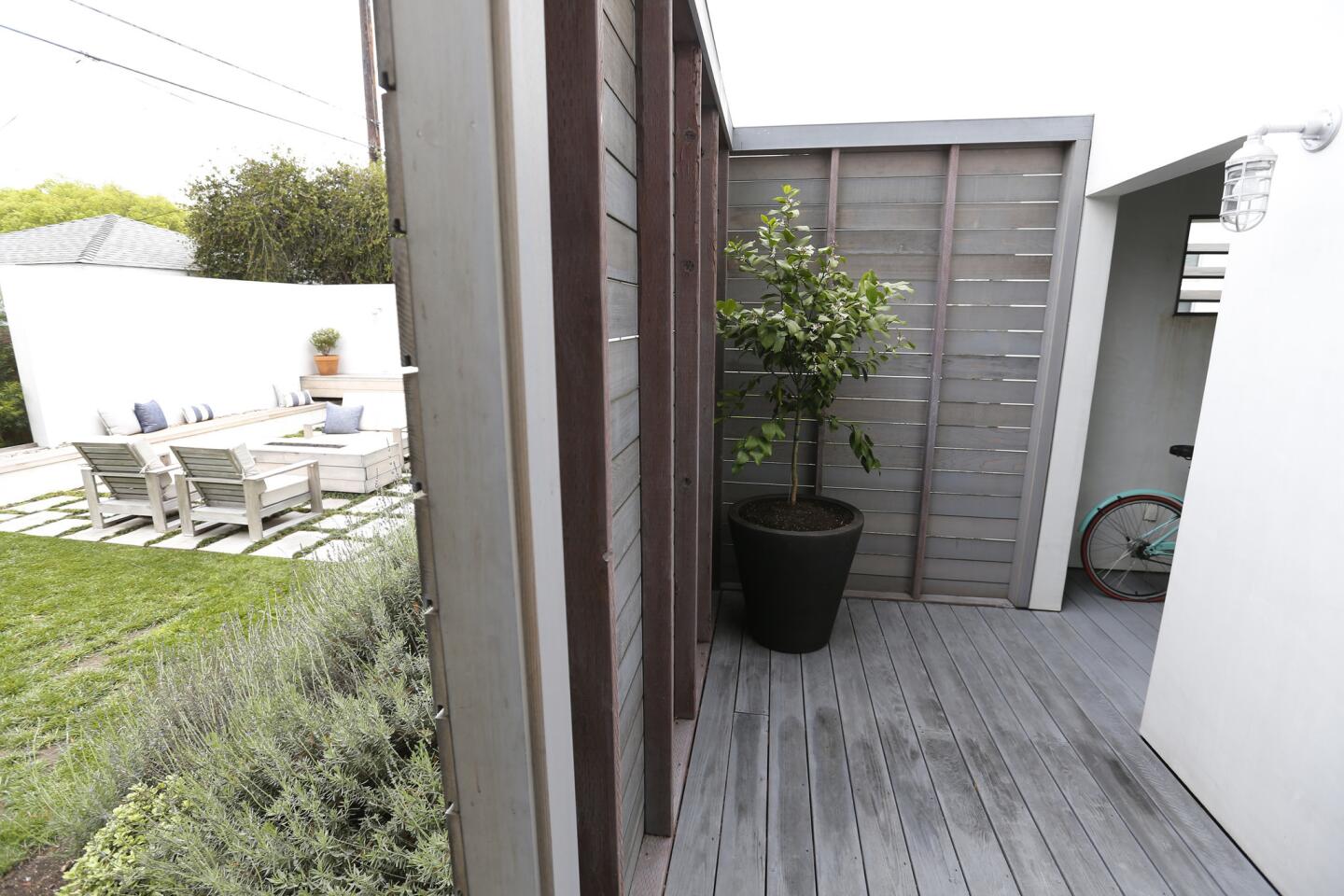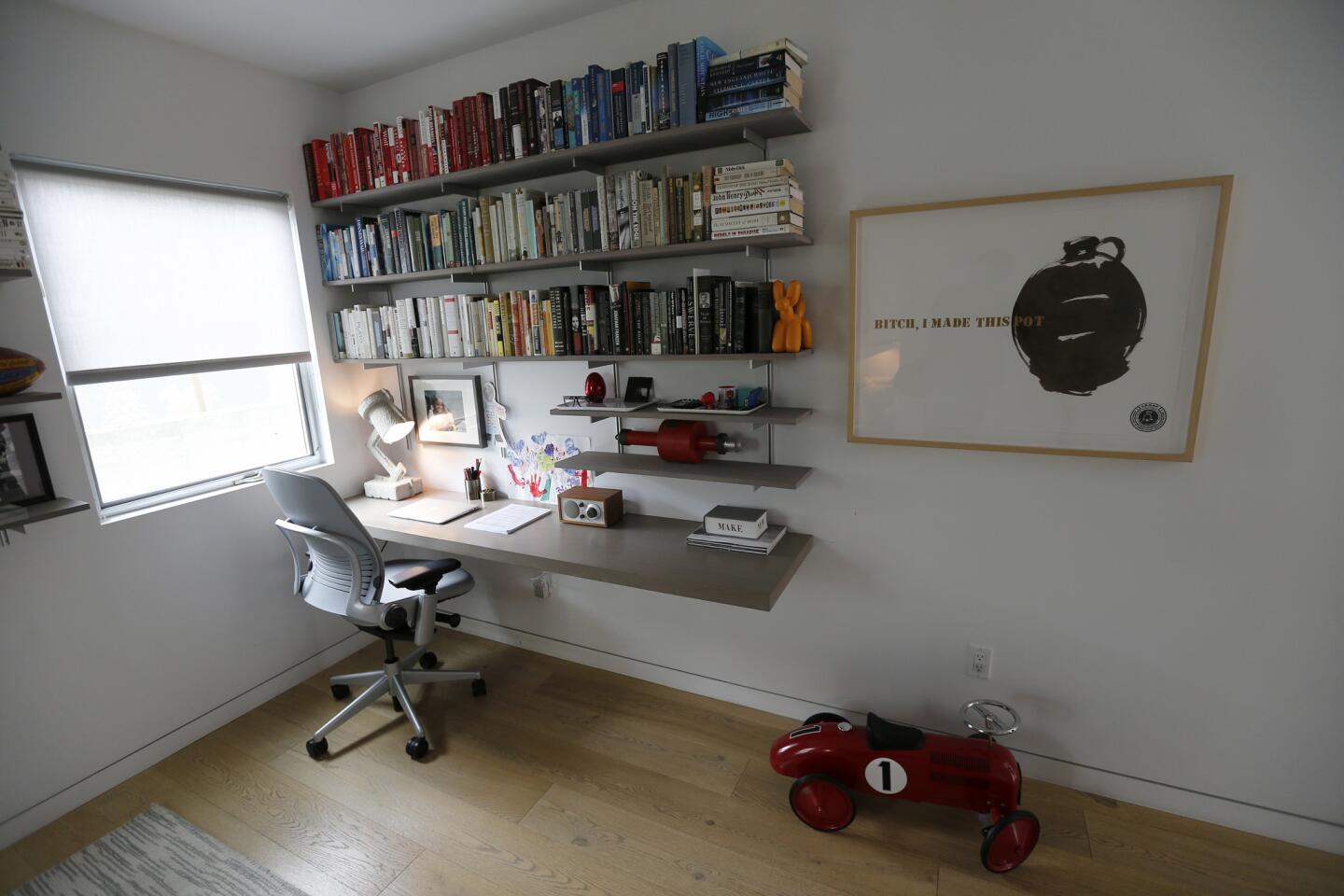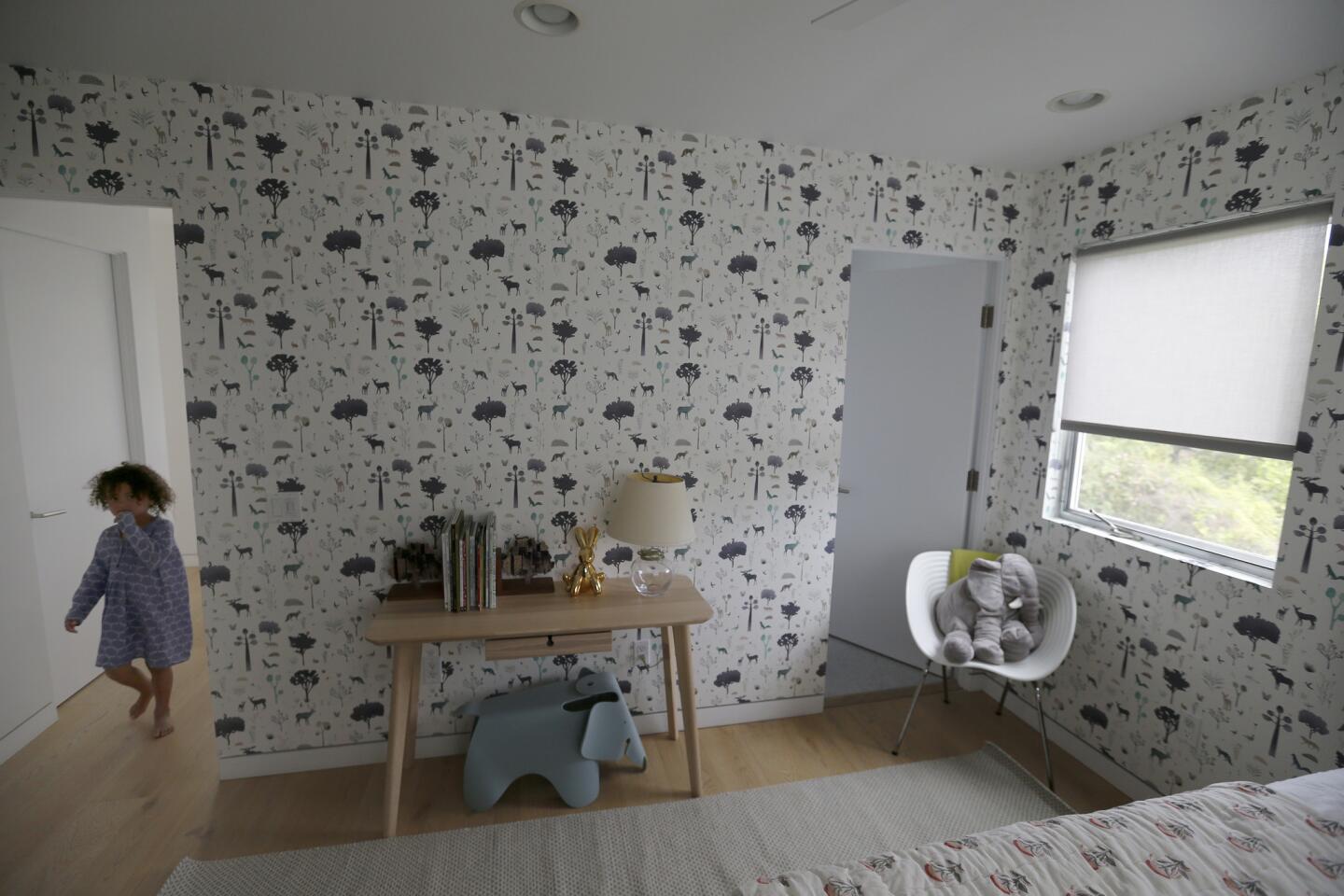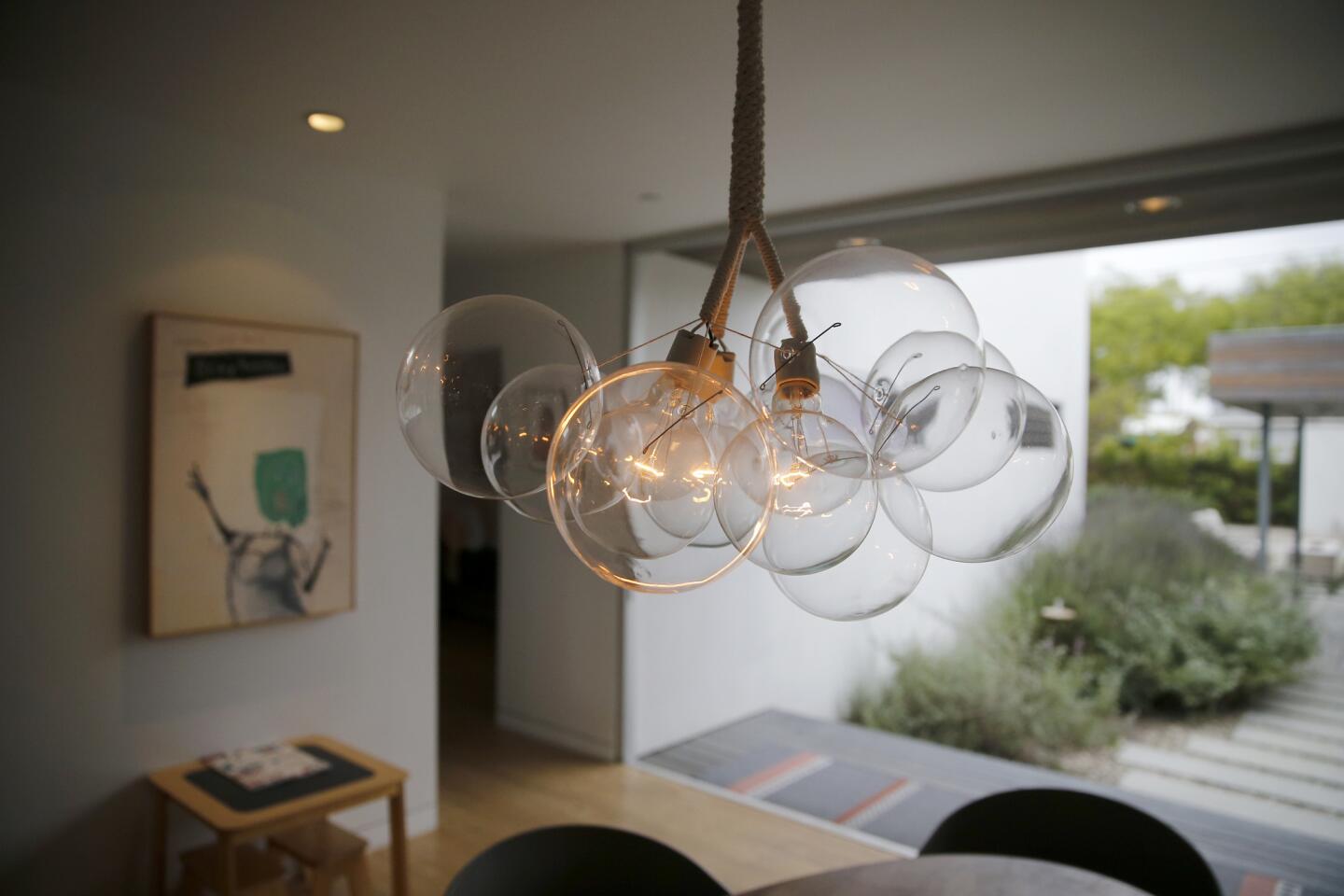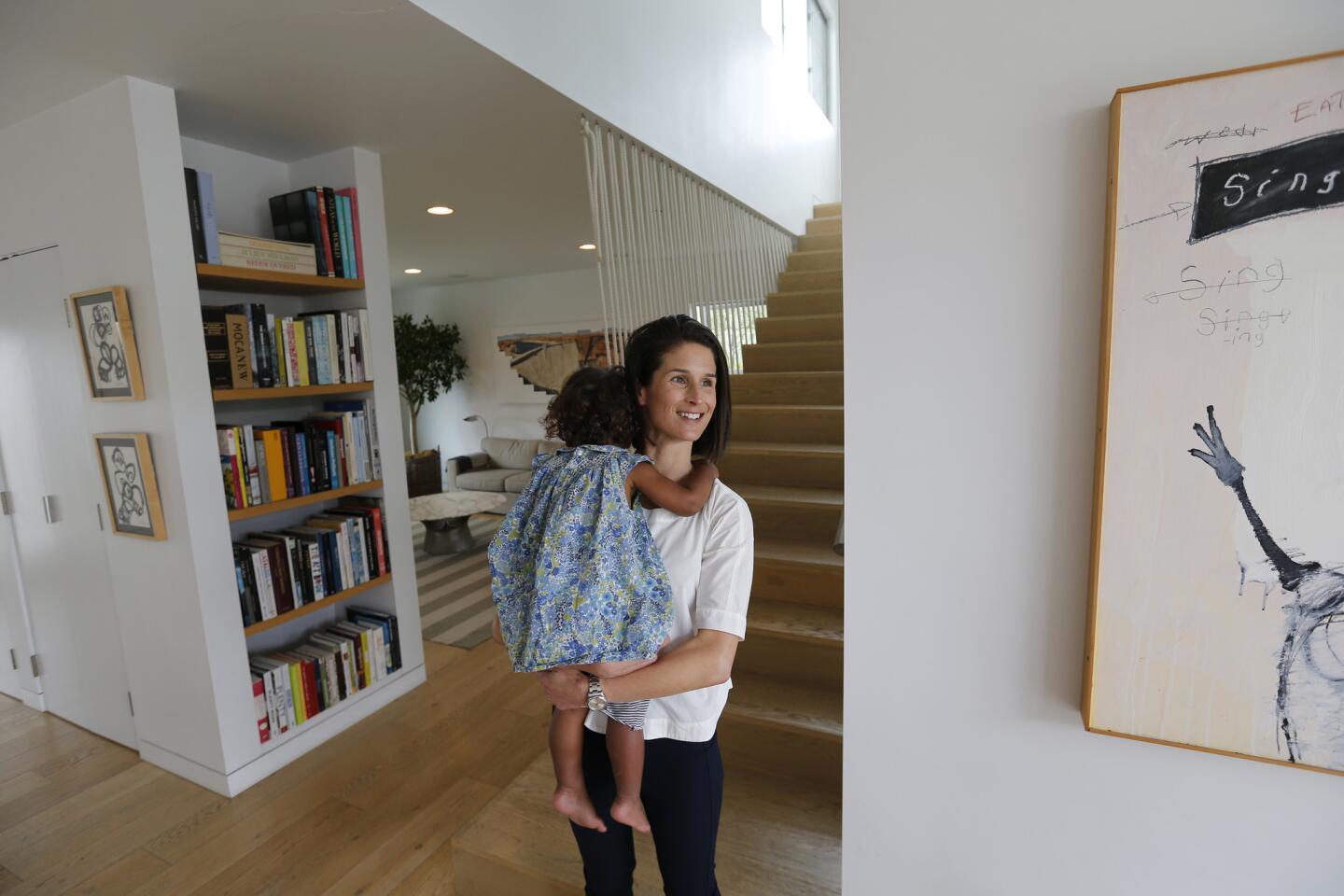This is the Culver City home that a family built — with its own hands
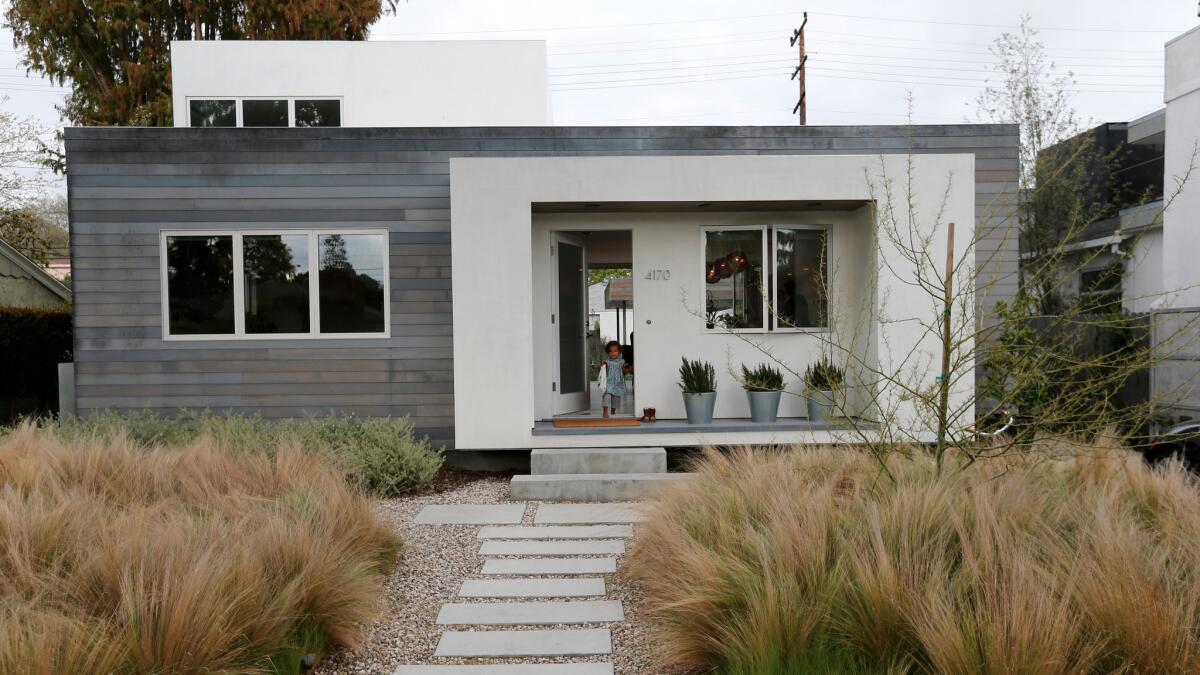
The most influential moments in life are often the most unremarkable -- bumping into your future spouse on the dance floor, for example, or in the case of architect Noah Riley, being handed a hammer and nails by his father.
“My family grew up in a house that my dad and mom built,” he says. “When they added on to it when I was about 10 or 12, the kids helped out. A hammer and nails was like a babysitter for me.”
With a family background deeply rooted in design and building -- his father Jefferson Riley is also an architect -- it’s not surprising that the New York-based architect would end up living on a sailboat in Marina del Rey while he designed and built a home for his sister Gerun Riley and her husband, Jason Wilborn.
The couple bought the two-bedroom, one-bath Culver City bungalow in 2009 with the hope of expanding the property.
But when the rehab turned in to a much more substantial project – and costs steadily increased – the couple realized they could not afford their dream house.
The timing was fortuitous, however, as Noah Riley had just left SHoP Architects in New York and was free to travel to Culver City to work on his first solo design-build project. He enlisted the help of his brother Nathaniel and brother-in-law Wilborn along the way.
Working together, the three framed the house, installed the radiant heating system and completed the finish carpentry, hardscape and exterior wood finishes. Plumbing, electrical and flooring were subcontracted.
“We worked well together,” Noah says. “We framed the whole project as fast as anyone could have. We didn’t even talk to each other.”
Unlike the Riley brothers, Wilborn, a television writer and producer, had no prior construction experience. That didn’t slow him down. “He was physically up to the challenge,” says Noah. “It was uncharted territory for him, but he was game for anything. He would join us when we needed someone to lift a heavy wall or beam.”
And as a homeowner-builder, Wilborn had a unique mind-set. “Jason was very meticulous about where the nails went in his own home,” says Noah with a laugh.
“It was incredibly rewarding,” Wilborn says of the experience.
The couple wanted an open, contemporary home that was not too open.
Noah responded by designing a collection of light-filled spaces that are distinct but interlocked so that his sister’s growing family, including daughters Hadley, 5, and Lake, 2, can have privacy but not feel detached from one another. “We tried to create a lot of openness at the front of the house without it having a fishbowl feeling,” explains Noah.
The kitchen and the dining room tie together and continue to an outdoor dining area that makes the home feel much more expansive than its footprint.
“We are out there all the time,” Wilborn says. “We open the door as often as we can. That was what was so cool about the way Noah designed the house -- the outside is an extension of the house.”
The living room faces the kitchen but is divided by a wall separating the rooms. At the entrance to the house, a cutout window and storage bench serve as a miniature mudroom and creates a feeling of being in two distinct living areas at the same time.
The couple also wanted their home to connect to their neighborhood. “They didn’t want to turn their back on the street but be open to interacting with neighbors,” says Noah.
Indeed, when they are cooking in the kitchen and the windows are open, the couple can call out to their neighbors walking down the sidewalk.
“We’d seen so many houses that were so private,” says Gerun, who works for the Eli and Edythe Broad Foundation. “We wanted to be a part of the neighborhood. The Fourth of July block party was listed as a property disclaimer when we bought the house and that was fine with us.”
With a welcoming front stoop and ample windows, the house has both separation and privacy. “It feels like their space, but they can be connected to their neighbors,” says Noah.
This is a special sort of dream house: the family-friendly contemporary home the couple wanted with indoor-outdoor access, a connection to the street and room to grow along with their children. And although the original house was taken down to the studs, the house retains the same footprint, with an unobtrusive second floor that is set back from the street.
“Thus far, no one has figured out how to make less square feet more valuable, but it’s an interesting question,” says Noah. “It was one of the things that we were trying to push for: Not letting square footage be the only metric for success. I wanted to utilize the outdoor space, the intermingling of spaces and the reduction of circulation.
“For me the project was about using interesting ways to create a real base of family life,” he continues, “compounded by the fact that it was family-built.”
Adds Gerun: “My mom keeps encouraging Jason to write a children’s book called ‘The Uncles Build a Dream House.’”
ALSO:
This Laguna Beach dream home was built on a budget — and lots of D.I.Y.
An L.A. designer bought a trailer park home in Ojai and tricked it out. The results are stunning.
Just 960 square feet: A 1925 bungalow gets remodeled for a growing family
Twitter: @lisaboone19
